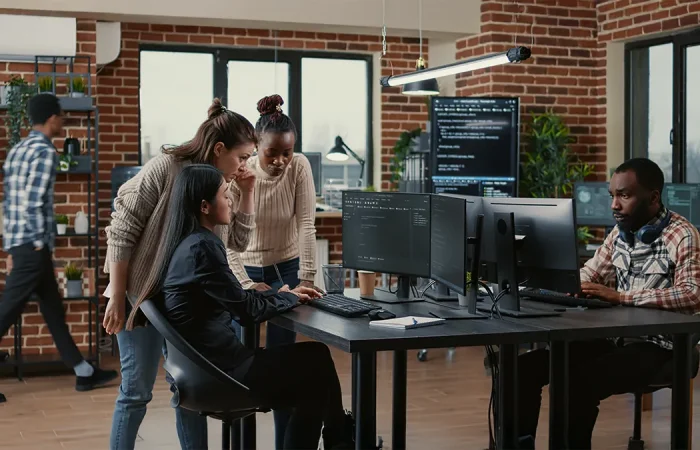Collaboration is easier said than done. Being a high-performing executive is no guarantee that the individual will be successful in facilitating collaboration, too. Sustainable collaboration could be highly tedious for some talented executives or C-suite leaders.
Why?
The fiery individualism that distinguishes leaders often comes in the way of effectively facilitating collaboration. According to an article published in the Harvard Business Review in December 2022, there are three primary factors behind the failure of collaboration: working in silos; leaders lacking collaborative vision; and the unwillingness of senior managers to relinquish authority/control.
Given the work environment today, collaborative ventures have become more significant than ever. The lines between division, functions and operations have faded. Also, with the dawn of the hybrid and remote work era, collaboration has become a necessity.
As organizations seek to develop innovation capability, it is extremely important for every silo –marketing or HR or consumer analytics – to coordinate and collaborate effectively.
Barriers to facilitating collaboration
A leader may have certain traits that could pose an obstacle to the individual’s role in facilitating collaboration.These are:
Obsession with identity, over-competitiveness and narrow mindset. You are over-confident and arrogant about your own achievements. You assume you know how integrated efforts pan out, but joint initiatives test your skills.
When you need to facilitate collaboration, you don’t know where to draw the line between becoming an active participant in the project and helping teams come together and execute it.
Excessively result-oriented. This is a common trait of uber-achievers. You are so focused on results that you compromise on team-building and bonding. You push the teams too hard to deliver results without integrating the people aspect. You set unreasonably high expectations without taking into account the capabilities. This creates stress within the collaborating teams.
Inability to trust and delegate responsibilities. You are a control freak and like to micromanage your team/s. You find it difficult to trust others. Your skepticism is anything but healthy. The deep mistrust plays on your psyche and you are overly focused on trivial issues.
This prevents you from delegating authority. You would rather have responsibilities concentrated in your own hands than trust the team/s to execute these effectively.
Where are you lacking?
As a leader, you need to understand that building relationships and promoting inter-team interaction make up the core of collaboration.
For a leader, a lot rides on building meaningful relationships at the workplace. Especially in your role as a facilitator of collaboration, your aim should be to bring people together and empower them to complete the task. You may need to supervise from time to time, but from a distance.
Keeping a tight rein on every aspect is not how a collaborator facilitates. As a leader, you may need to grant the teams access to certain resources, explain the project, provide them with the wherewithal to execute it successfully. Help them grow by investing accountability and ownership in them.
But if this is not how you perceive the role of a facilitator, you need to learn how to facilitate collaboration.
Collaboration is a highly complex function, comprising several soft skills and attributes. Since a leader is more at the managing end of the spectrum, you need to be a good listener, manage conflict, have problem-solving skills, self-control, and other people skills such as humility and empathy.
So, what must you do?
Introspect. It will provide you with a perspective on what you need to accomplish. Sometimes answers to modern-day issues can be found in ancient wisdom and philosophies.
Philosophies and ancient wisdom concepts are like beacon lights for management practices, including facilitating collaborations. Whether it is Greek philosophers such as Socrates, Aristotle; or Chanakya, the chief advisor of the Mauryan Empire in Ancient India; or Japanese and Chinese philosophers, their accumulated wisdom is highly effective in enhancing managerial efficiency.
Cristina DiGiacomo, author of Wise Up! At Work and founder of MorAlchemy (a philosophical leadership consulting firm), says philosophy offers several fundamental benefits to the corporate world. Quoted in an article in US-based publication Global Trade Magazine, she says philosophy provides the foundation for several progressive management, communication, and organizational practices.
So, for instance, empathy and commitment can be traced to the philosophies of service propounded by Roman philosophers Seneca and Marcus Aurelius; employee-centricity can be attributed to Plato; reciprocity and meritocracy to Confucius.
The Japanese culture and management styles have consistently piqued the interest of corporate management theorists. Especially since post-World War II reconstruction in Japan, several parallels have been drawn between Japanese techniques and the record rise of the Japanese economy. Although the blanket application of Japanese corporate management styles remains a topic of much debate and discussion, the effectiveness of some of these techniques cannot be denied.
At the core of the Japanese approach is the aim to protect the essence of their culture. This explains the existence of the Japanese keiretsu, a complex set of family-based companies with interdependent and interlocking relationships. From these traditional practices and beliefs, arise management techniques, such as consensual decision-making, in-house training of workers, or focus on building harmonious relations in the workplace.
Therefore, in the current environment where the boundaries between approach to work and life often blur, some age-old Japanese concepts can be very helpful.
Leveraging the wisdom, you can build the right approach to inculcate the skills required for your development as a facilitator of collaboration.
The concepts and their meaningful application
What’s your Ikigai?
Ikigai, or a combination of iki – life and gai – worth, means finding your true purpose in life in relation to your talent, passion and strength.
When applied to collaboration, it simply means knowing and understanding what you – as a leader – want to be known for. Obviously, you want to be seen as a facilitator of collaboration. Focus on the reputation you are genuinely seeking to build.
Once you’ve got the reason you aspire for, work on ways to strengthen your collaborative side.
Embrace Wabi Sabi.
Wabi sabi essentially means accepting imperfections (as much as we accept the perfections) in life.
For a leader looking to build collaborative skills, this would loosely translate into knowing and understanding the areas of development or the scope for skill enhancement.
Start with your strengths and weaknesses. Make a list of the soft skills you have and the ones you lack. Be more self-aware as a leader. Understand your emotional triggers, approach things with an open mind, practice self- discipline, focus on emotional intelligence.
Assess your skills, such as conflict resolution, negotiation, and communication. Inter-cultural sensitivity, for instance, is a highly significant must-have attribute. See how you fare on these aspects.
Grow your knowledge and understanding by reading, listening to talks, webinars, podcasts, and consuming every other form of knowledge-rich media.
Tap into your experience pool. This will help you draw insights into why you may be struggling. Seek feedback from your peers at the C-suite level or from other senior members in the organization whose opinion you value.
Engage with a business or executive coach to help you develop into an effective facilitator of collaboration. You could consider training focused on the development of effective collaboration skills.
This will also help you understand the requirements of building a collaborative work environment. You will have a better understanding of how facilitators operate.
Shikita Ga Nai and Kaizengo hand in hand in a sustainable collaboration.
Shikita ga nai means to let go things (that cannot be changed), while kaizen refers to improvement in all areas, taking steps – small or big.
In developing collaborator-related skills, kaizen is the umbrella that takes shikita ga nai in its fold. When you apply kaizen, you focus on improvement. Learning to improve can happen in various ways.
First, of course, are the physical resources that you can avail of, such as training or courses, to grow and improve your understanding.
Next come the intangibles – your interaction with people, your power of observation and assessment. Leveraging these to enhance your skills and draw insights will add significant value.
Move with an open mind. Be flexible to adopt change and embrace new ideas. Challenge your established mindset. This will mean working on attributes such as micromanaging or being a control freak and not delegating authority and responsibilities.
Hold meaningful interactions and conversations with the members in the initiative. Understand their viewpoints. Their opinions will help you bring a fresh perspective to the table. With a changed and broader mindset, you can achieve far greater and impactful results.
As a leader, you need to value everyone equally. When you learn from members in your team, as much as they learn from you, it fosters a healthy interdependence. Acquainting yourself with different opinions and suggestions will tell you a lot about your own mindset. What are the comfort zones, where are the triggers, what makes you uncomfortable, etc.? And when you know a challenge, you can address it effectively.
Accommodating varied viewpoints promotes mutual respect and bonding. It levels the playing field for seamless flow and exchange of ideas and concepts.
Healthy interdependence is the cornerstone of any collaboration. People need to work in unison and coordination for it to be successful. When you identify the key members and work alongside them, you build strong relationships on which collaborations thrive. It piques your curiosity. You observe how your mind functions, how their mind functions. This gives you a peek into the potentials for both conflict and confluence.
Letting go of excessive control paves the way for growth, freedom and compassion. By passing on responsibilities, you help others grow. A leader who relinquishes tasks willingly and gives others the chance to grow. Delegation is intrinsic to collaboration. It empowers the next lot to take decisions, to develop accountability, to take ownership.
Another aspect of shikita ga nai and kaizen is that you are aware of the limitations of the collaborating teams. This helps you set the right expectations. It will also enable to make the right efforts to equip the teams with the desired knowledge and expertise.
Above all, it helps you develop into a mentor and a coach. You transform into a leader in whose ability people have confidence, a leader who can be trusted, a leader who is genuine and objective in approach.
When managing conflict, stick to Gaman.
The concept essentially implies having the ability to handle challenging, rather unbearable, situations with dignity and patience.
No collaboration progresses without running into conflicts or similar situations occasionally. As a facilitator, you need to build conflict resolution and negotiation skills. Teams at loggerheads, people hitting a blind spot mid-way through the project are some issues that could create a lot of stress. A leader needs to be calm to diffuse the situation.
Conflict management skills come handy from the time of planning the collaboration. The teams that you pick, the members you choose, their alignment and disposition – all these need to be factored in. Besides being aware of the temperament of the people involved, a leader needs to have strong self-control, maturity, patience, and resilience.
This will not just help in mitigating issues, but also help the team bounce back fast.
No learning is complete without Shu Ha Ri.
Tao says, “when the student is ready, the teacher will appear. When the student is really ready, the teacher will disappear.” This is the essence of shu ha ri.
Literally, shu means following one master to learn the basics; ha implies experimenting to put the teachings into practice; and ri refers to innovating and applying the learning to various situations.
The concept is overall highly relevant for application in facilitating collaboration. A leader learns from various sources, including direct learning and through interaction /feedback. But the learning that has been gained needs to be applied too. How do you do that?
The first step is to genuinely implement the learning.This will strengthen your position as a leader. You act on the knowledge you’ve picked up.
Second, you need to share the learning you’ve gained. You could actively share the resources with critical people you deem have the potential to lead collaborations. You could design an intensive learning and development program, including focused training sessions on collaboration-related skills.
Be incisive in your contribution. Don’t just keep it namesake. Share your insights on how to strategize for the collaboration. Help the team with resources, in ideation, etc. Observe how they are responding to your overtures. Study and draw your assessments.
Give credit when and where it is due. As a leader, move the spotlight effortlessly to the team. Ask the deserving people to take a bow when they receive appreciation. This is important because it helps showcase new talent; plus, it strengthens your position as a leader who is not eager to take the credit.
Seek advice and incorporate feedback. This increases the team’s confidence in you as a leader looking to bring in diversity. Incorporating feedback and suggestions will instill trust and show your genuineness to improvise processes. Being open about your vulnerabilities—of course, discretion is required—brings out the humane aspect. Teams relate to this.
Acknowledging the contribution of individual members, or rewarding innovative ideas, also contributes to building credibility.
When you start as a leader to understand collaboration and what it undertakes to effectively facilitate it, you are a student. The sources you use, the people you interact with, they serve as your teachers. The insights you draw and the learning you take are your knowledge. Once you gain it and start implementing, you transform from a student into a teacher. The “teachers” then recede to the background and you emerge to take the legacy forward and set the right example.
It is extremely important for a leader to be seen as a role model. How you behave, what path you follow for growth, the genuineness of your quest for knowledge and to share it thereafter – everything is noticed deeply and intently.
Make sure you take the right steps in facilitating collaboration—these will form the track for your team to follow.
To conclude
In the highly uncertain macroeconomic environment today and amid growing focus on employee and customer satisfaction, certain Japanese management techniques and principles of philosophy resonate deeply. Hence, the scope of their applicability in complex skill-based tasks such as facilitating collaboration is high.
In facilitating collaboration, a leader must have a strong grasp over team-building and team-bonding; over how to ensure harmony and effective coordination. Research shows that optimism about human nature forms the core of the Japanese value system. This underlines the relevance of the Japanese management techniques and philosophies, especially today.
Looking to the East could not be timed better.


